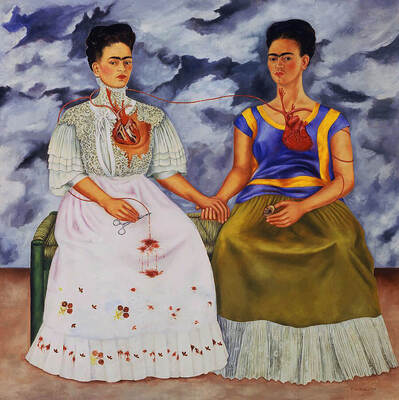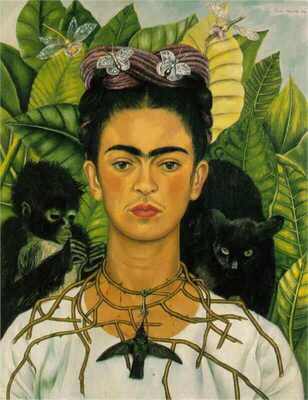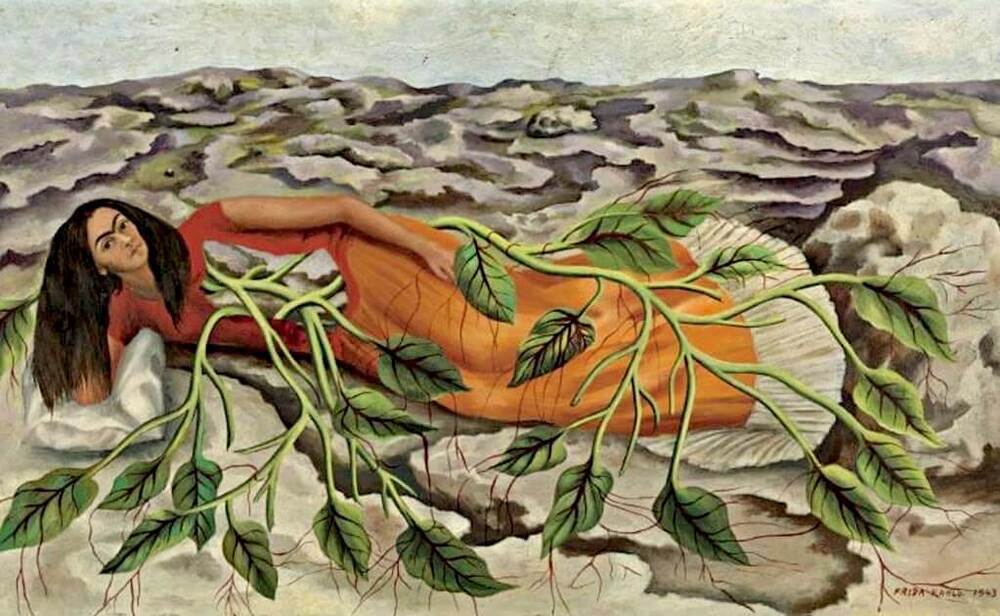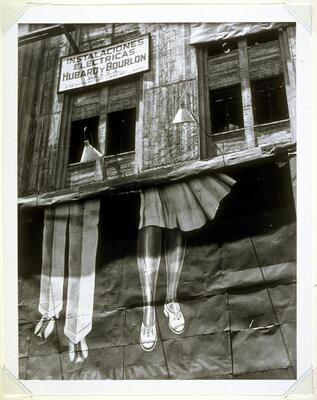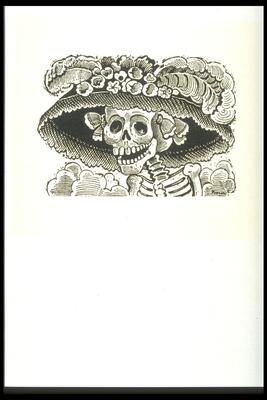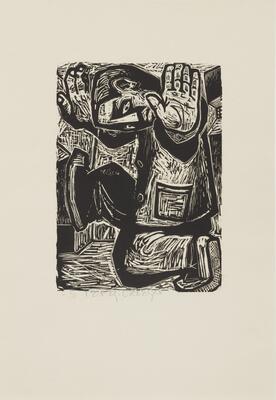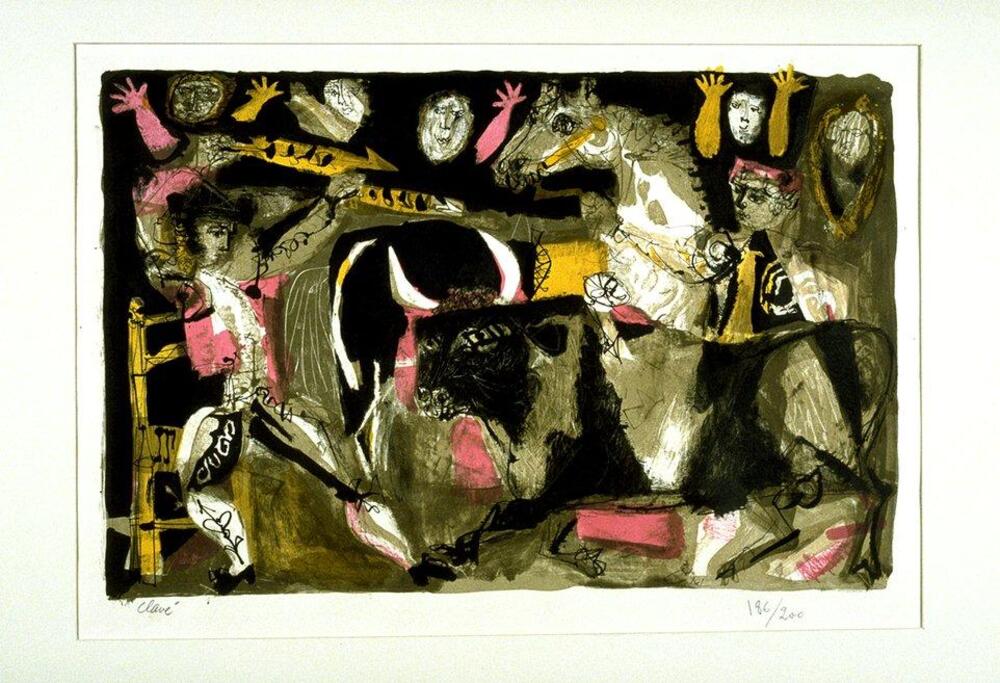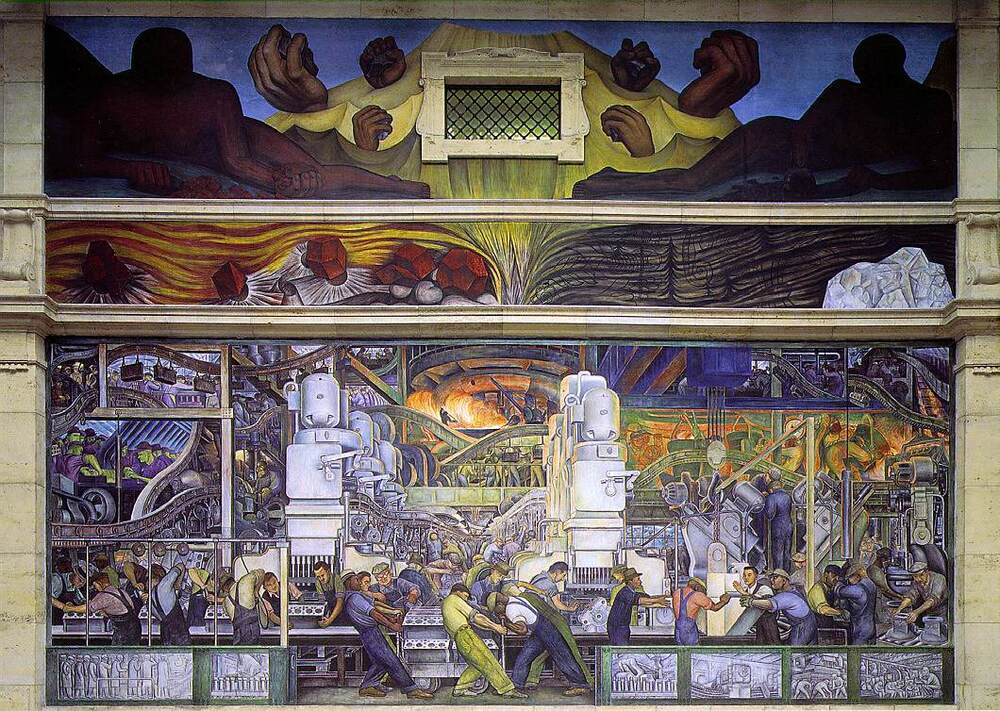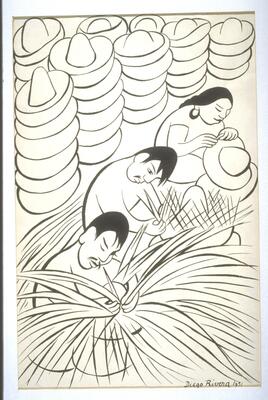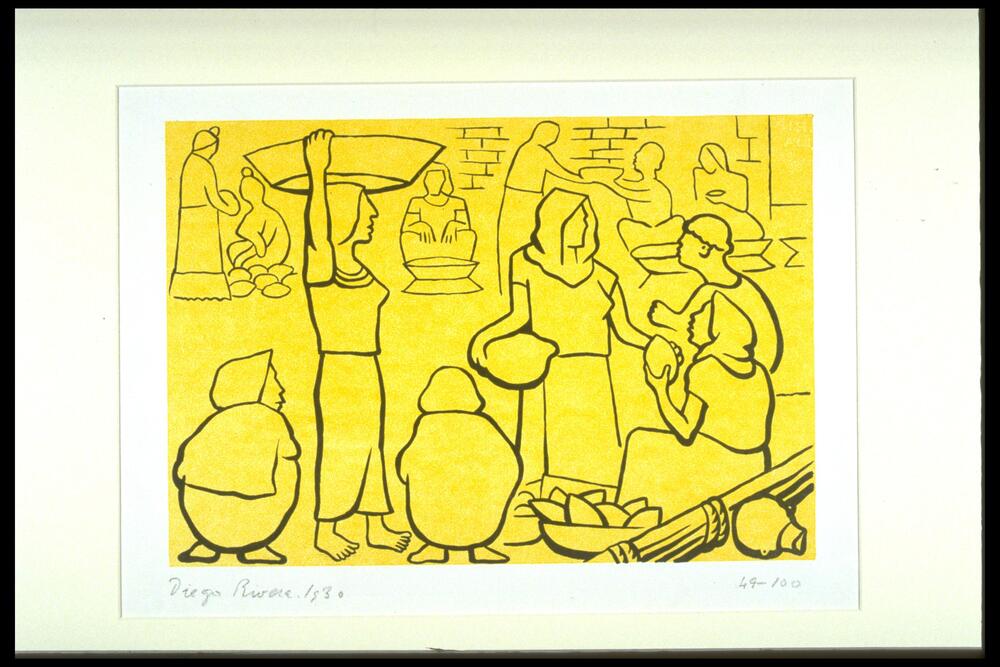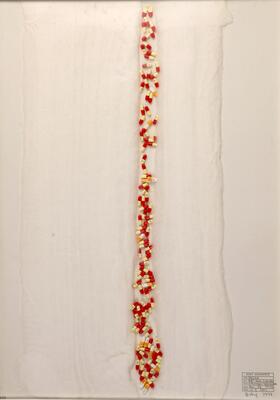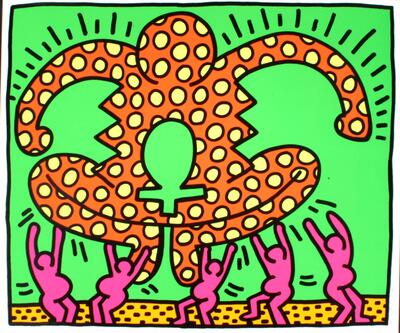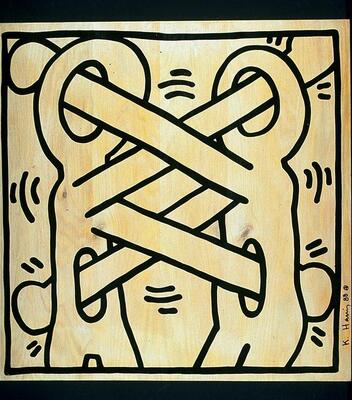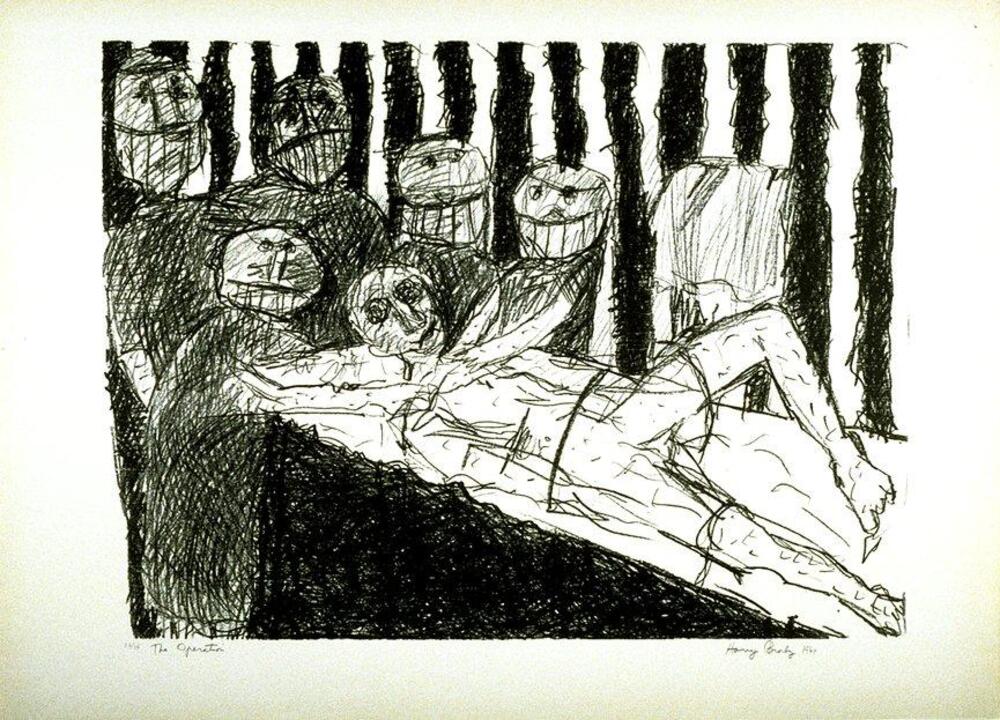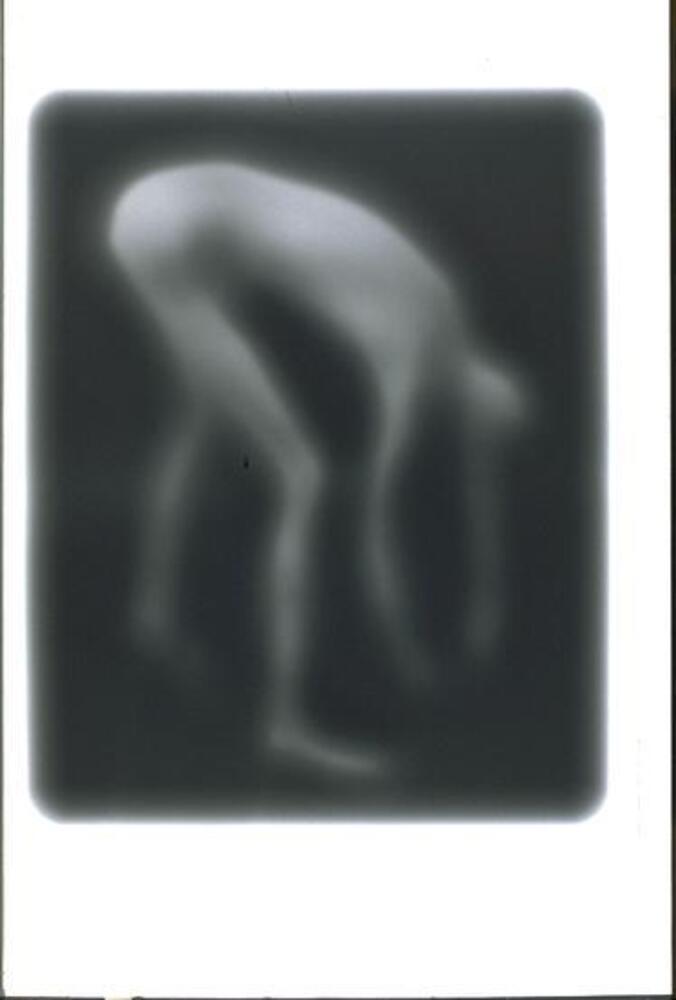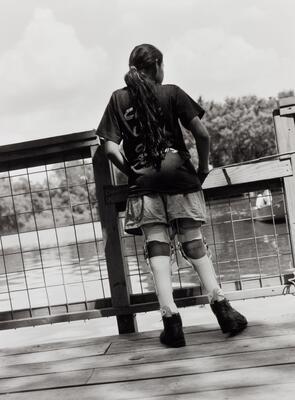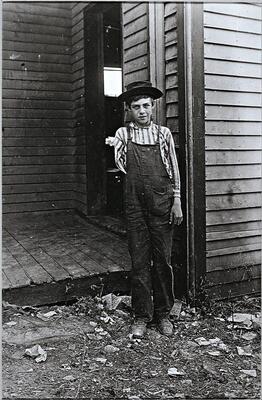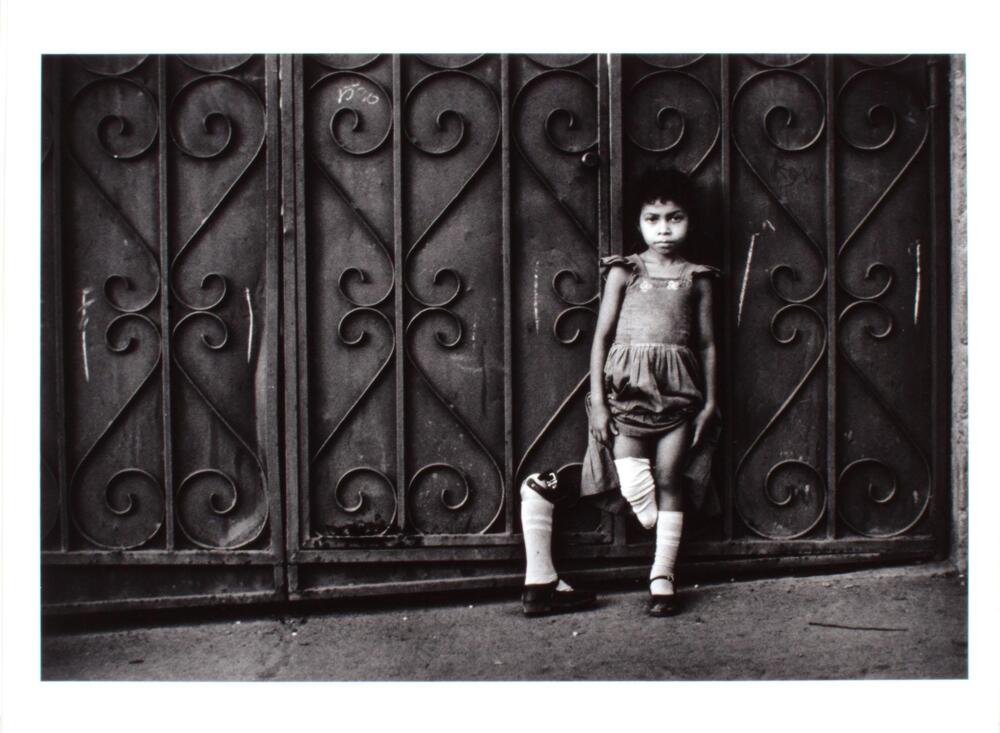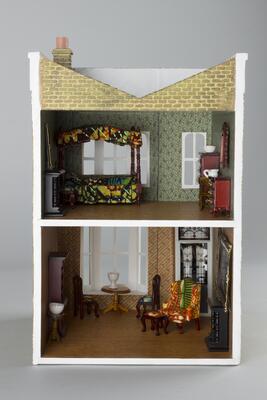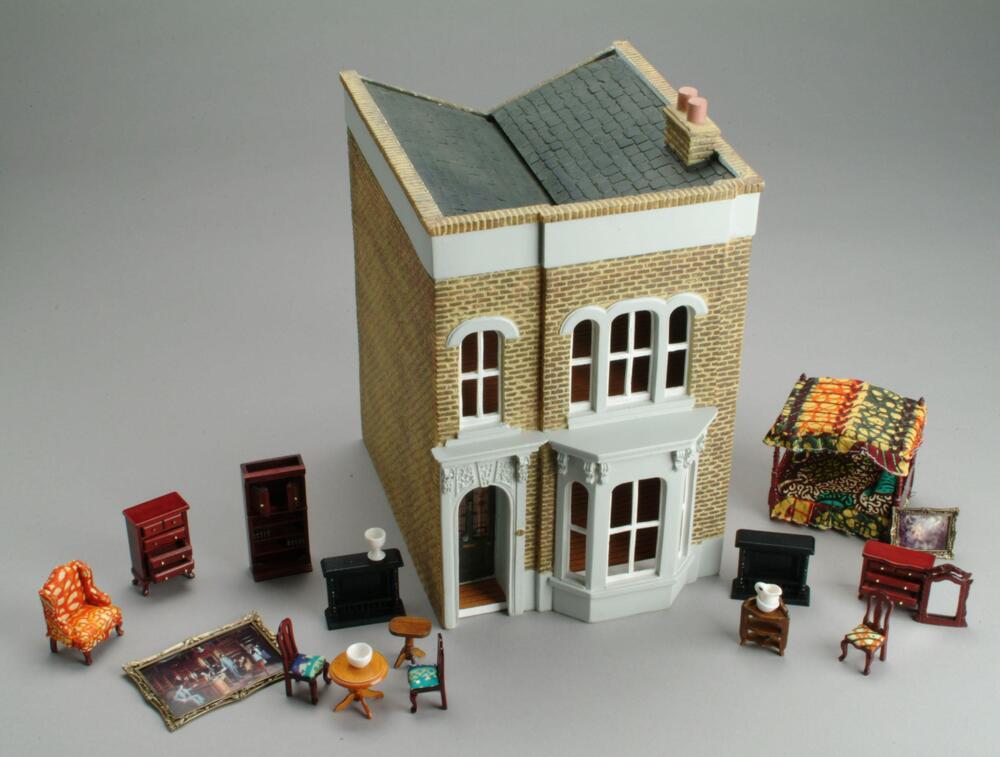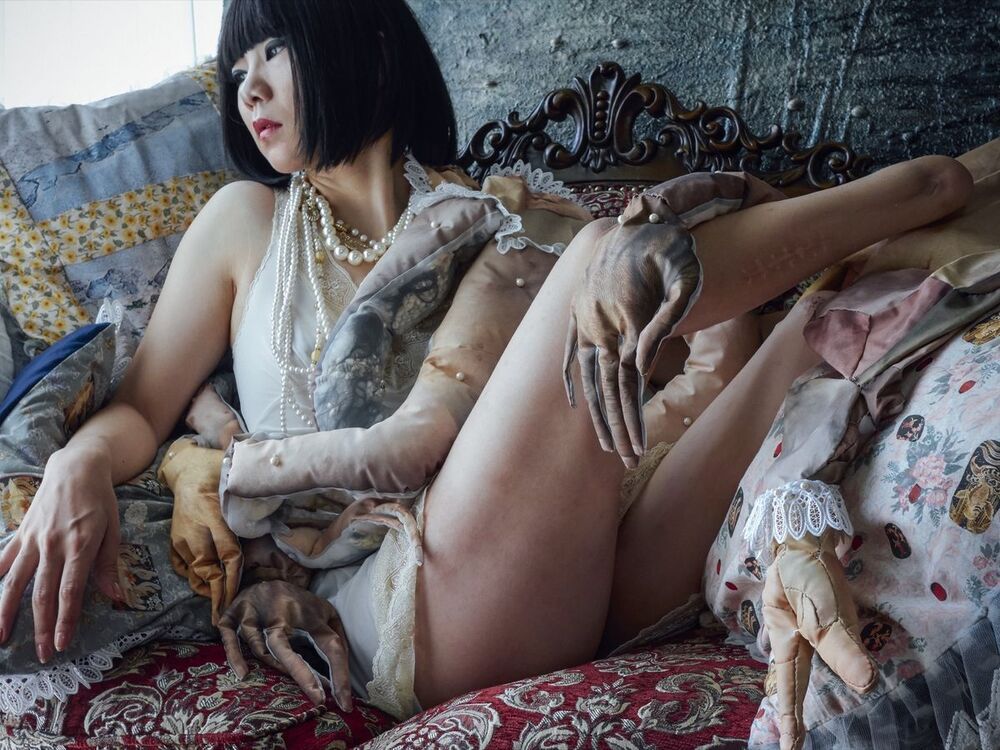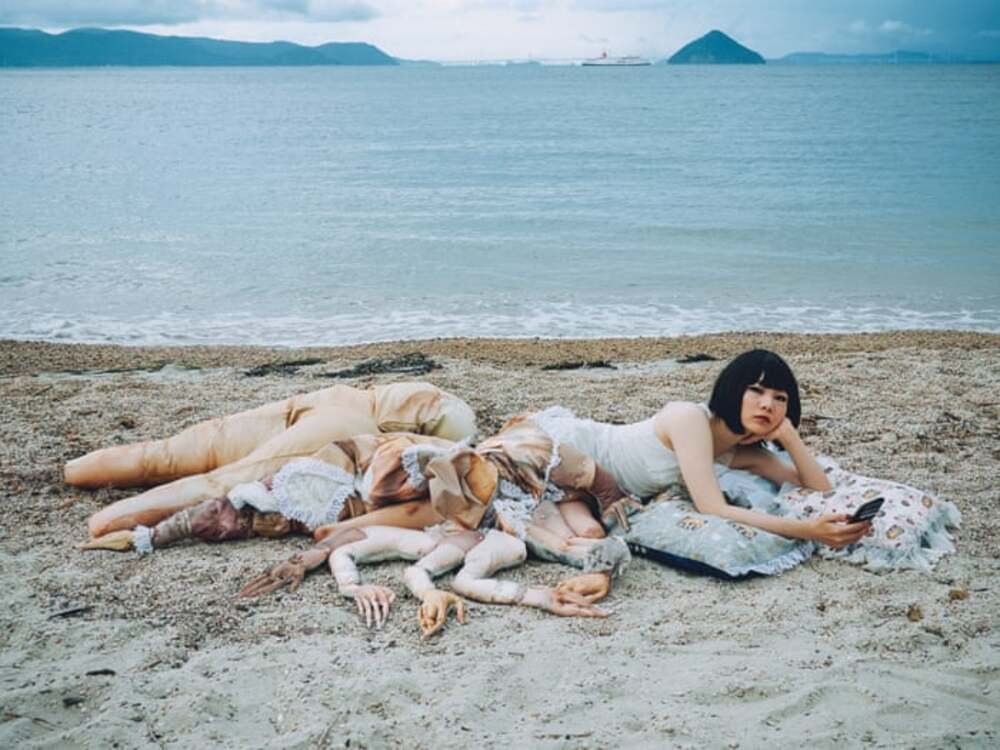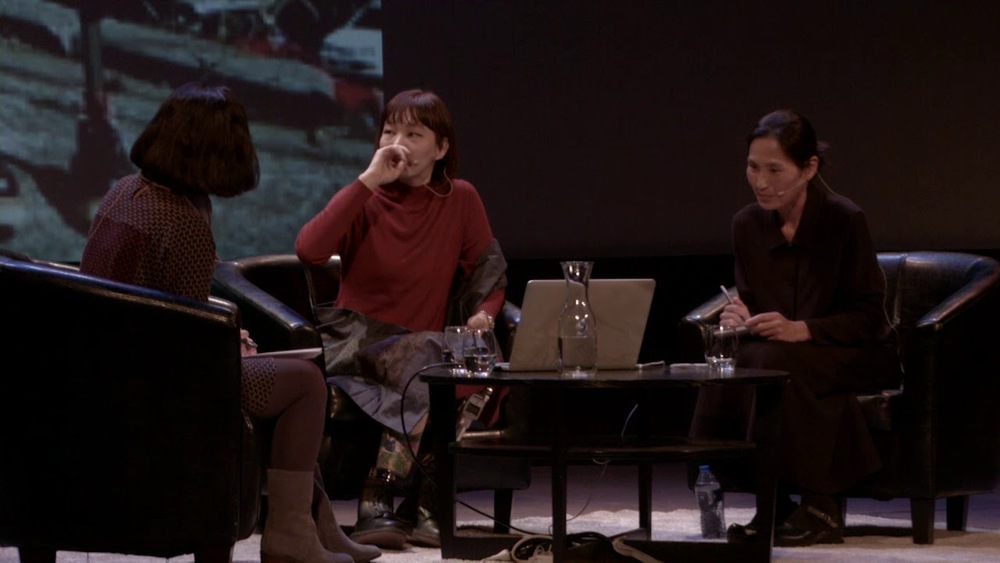ACTIVITY - SPANISH 430 : Nuñez
Frida Kahlo and Other Representations of (Dis)Ability and Health in Art
Welcome! If this is your first time looking and thinking about art, don't be nervous! Everyone has something to add and talk about, you just don't know it yet! Below are some questions to consider when looking at art if you need help getting started. Also, you can click on any image to enlarge it, and even select the Object Record (for works from the UMMA Collection) to learn more about the piece (if we have the information).
|
As you look, consider:
|
Visual artists use formal elements such as line, color, texture, and space to create and convey meaning:
|
Part One: Frida Kahlo: Her Work and Her World
Frida Kahlo (1907-1954) was a Mexican painter known for her many portraits, self-portraits, and works inspired by the nature and artifacts of Mexico. Inspired by the country's popular culture, she employed a naïve folk art style to explore questions of identity, the body, postcolonialism, gender, class, and race in Mexican society.
Below are several works by Frida Kahlo:
1. Pick one of these works and do a detailed visual analysis:
- Describe: What do you see (nothing is too obvious!). A good way to think about this process is that you are describing in detail to someone that is not looking at this work.
- Interpretations: What is this piece trying to say? What emotions does it bring up for you? What is the artist trying to communicate? Emphasis on the plural, there might be multiple interpretations!
- Connections: How does this piece relate to Frida's Diary that you read? To what you know about her and her life?
2. Which work is your favorite and why?
3. How would you describe her art?
4. What are some repeating patterns/colors/themes etc. that you see?
5. How does Frida represent herself? How does she occupy space? What kind of settings does she place herself in? What is she doing?
Below are some works from the world of Frida, including some from Diego Rivera, whom Kahlo had a complicated marriage/relationship with, as well as a photograph of Frida Kahlo by Manuel Alvarez Bravo from 1938:
1. What similarities or influences do you see for Frida in any of these works?
2. What similarities do you see between Frida's self-portraits and this photograph of her by Manuel Alvarez Bravo?
Part Two: (Dis)Capacity and Health in the Arts
There have been and are many other artists who have grappled with issues around health, whether it was their own or of someone close to them, and the world's portrayal of ability vs disability. Below are some works in the UMMA collection or from recent exhibitions grabbling with these themes.
1. The artist Buky Schwartz has made a framed assemblage piece using pills on a gauzy background. What could be the message that he is trying to get across?
2. These are two separate works by Keith Haring, a popular pop artist. How does he represent the body? Who's body is he representing (they could be different)? What do you think each piece is "discussing"?
3. What seems to be happening in this drawing? What do you see that supports that? What seems to be the artist's opinion about hospitals and doctors?
4. How does this artist represent emotion? What emotion do you see here?
5. We have several documentary or "street" photography of children with prosthetics and amputations. How do these photographers portray these children? What setting are they in? What feeling do you think the photographer is trying to get you to feel, and why do you think that is?
6. Yinka Shonibare CBE, RA (born 1962) is a British-Nigerian artist living in the United Kingdom. His work explores cultural identity, colonialism, and post-colonialism within the contemporary context of globalization. A hallmark of his art is the brightly colored Ankara fabric he uses. Because he has a physical disability that paralyzes one side of his body, Shonibare uses assistants to make works under his direction. Shonibare has said “You know, all of the things that are supposed to be wrong with me have actually become a huge asset. I’m talking about race and disability. They’re meant to be negatives within our society. But they’re precisely the things that have liberated me. Because they are me, what I express. So it has not been a negative thing to be who I am but a positive thing." https://www.nytimes.com/2009/06/21/arts/design/21sont.html?pagewanted=all&_r=0
7. Mari Katayama recently held a solo exhibition at UMMA on her recent work. Katayama was born with tibial hemimelia, an extremely rare condition that stops bones in the lower legs from fully developing, often leaving them foreshortened. In her case, the condition also caused club feet and a cleft left hand that resembled a crab’s pincers. Consequently, crab motifs recur in the work of the Japanese artist, who was also born under the sign of Cancer.
What similarities and/or common themes do you see between Katayama and Kahlo? In what ways do they approach their work differently?
Part of 1 Learning Collection
<p><span style="font-size: 14px;">Teaching Guide</s...
<p><br></p>W20 / W 21 Andre - AAS 201
<p><span style="font-size: 14px;">W20 RAMIREZ - CAT...
<p><span style="font-size: 14px;">Originally used f...
<p><i>Oh, honey... A Queer Reading of the Collectio...
Created For
K-12 EducatorK-12 Student
Museum Visitor
UMMA Docent
UMMA Staff
University Faculty
University Student
Rate this Resource
AVG: 0 | Ratings: 0
& Author Notes
Creative Commons by-nc-saLast Updated
October 20, 2020 11:09 a.m.Report
Reporting Policy
